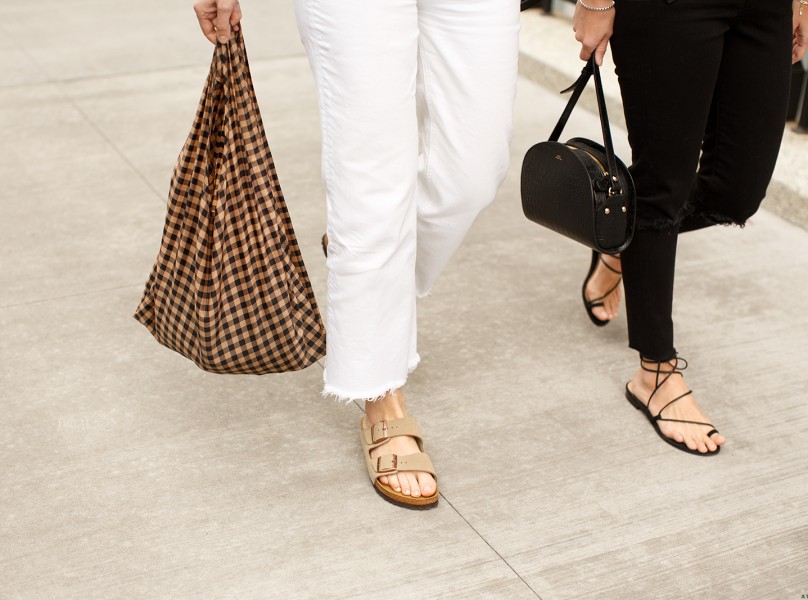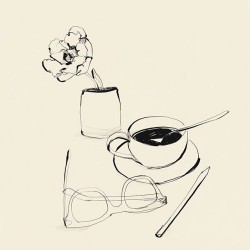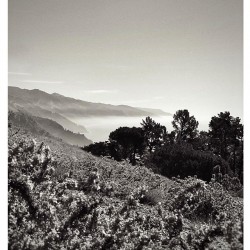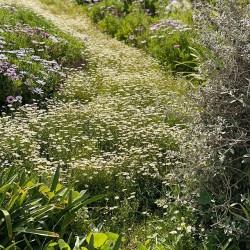Shop Vintage with Display Copy
5 years ago by
I have always had a real bone to pick with the conversations surrounding fashion and sustainability. Something never sat well with me when I was told to buy something made of recycled plastic water bottles. I watched too many people in my eye line simply discard their « non sustainable » clothes and re-stock their closest with the sustainable model. It made me cringe, to say the least, and it made me furious, to say the most. Too many were too concerned with an outward sustainable appearance to take the time to understand what was really the most sustainable option — to not buy something new until it is needed. Not needed because you wanted it, but needed because your existing puffer coat had been worn to shreds. And only then do you either buy secondhand or replace it with the best sustainable option. The most sustainable option is simply, buy less. But we refuse to hear it.
This tirade I just went on is why I am outwardly obsessed with Display Copy — a fashion magazine that doesn’t feature a single new piece of fashion. If that wasn’t inspiring enough, they expertly curate the best of the best vintage in their Edits and I dare you not to get lost in the scroll.
As an avid consignment and vintage shopper myself, I am thrilled to introduce y’all to this inspiring platform from Brynn Heminway.

Can you explain what Display Copy is and the vision behind it?
Display Copy is an omni-channel fashion magazine that doesn’t feature a single new fashion item. Our vision is to inspire people to find the same rush, excitement and style that a new designer dud gives them, in items that already exist. We promote reuse by showcasing the thrifted, the found, the recycled, and the upcycled. It’s not inherently about discarding consumerism, it’s about celebrating longevity over trend and style over fashion. Display Copy’s message is one of resourcefulness, collaboration, and celebration. It’s about cherishing each of the items we invite into our lives.
I’ve been in the fashion industry for 20 years. I love it, I will always love it. The way we dress and the way we express ourselves is a powerful tool of communication. At the same time, I really started to struggle with my role in the industry. I had a major crisis of soul. I was watching River Blue and it’s heartbreaking. And throughout that entire movie, every time they flashed to a Gap window, there was my campaign in the window.
I’ve been part of the problem. But fashion has provided me with a community, a sense of place for creative expression, a living, all of these things. So, I was really struggling with how to change my relationship to this industry. It came out of a really kind of dark place.
I’d always wanted to start a magazine. At their best, magazines provide inspiration and information that changes culture. And I don’t know a magazine off the top of my head that inspires in that way any more – except Alastair McKimm (EIC of iD). So Display Copy really came out of my personal struggle to reconcile my values with our industry. I can’t change the world but I can change my conversation with my community.
What inspired you to create a market place of « expertly curated vintage? »
The waste crisis just isn’t common knowledge, so I’ve had a lot of great conversations with really thoughtful and informed people that go a little like: ‘Why start a magazine about vintage?’ I give them boilerplate information – like we produce 100 and 50 billion items of clothing a year; 20% of those never sell; the 80% that do are only won an average of seven times before they’re discarded. People can’t believe it. It’s just not common knowledge.
I hope vintage becomes the new luxury and thrift becomes the new streetwear. I hope that it really becomes the new norm. For the sake of the planet, it has to be that way. Once you realize that a piece has a story, it becomes much more special. And you engage with it in a different way. You want to care for it differently. You want to make it last and you feel differently when you wear it. It’s not just to put on a persona. It’s actually a part of you and part of your narrative, and your story.

(English)

Beyond buying and gifting vintage and second hand, what else can we do as consumers to help offset the carbon footprint of the fashion industry?
Outside of literally buying carbon offsets which are controversial, the only way to offset your carbon footprint is to plant trees, donate to One Tree Planted, start a garden, support companies and/or non-profits that support regenerative farming. Regenerative farming is a way of farming that restores soil health and sequesters carbon in the soil where it belongs.
What do you want the designers to be doing in the fashion industry to increase its sustainability?
Our Sustainability Editor, Caroline Priebe, recently published a piece for Display Copy defining circular fashion and succinctly noted the following:
The Global Fashion Agenda, “Pulse of Fashion Report 2019 Update” reported that “Fashion companies are not implementing sustainable solutions fast enough to counterbalance the negative environmental and social impacts of the rapidly growing fashion industry”. Currently, any gains derived from sustainable initiatives within fashion companies are negated by growth of those brands.
We are not going to buy our way out of this problem by purchasing new “sustainable fashion”. Even “sustainable apparel” produces a carbon footprint. No one would go naked if we stopped producing clothing right now; there is plenty of existing apparel to wear, swap, trade and resell.


Caroline expands even further on above saying:
« This is a dangerous question for me. It is less what a designer should be doing and more about what shareholders, investors and the C-Suite should be doing to increase the sustainability and ultimately circularity of their business model. Bolt on sustainability, where a brand releases an organic cotton tee or some other one off product from time to time, does nothing. In order to reap the financial, social and environmental benefits of sustainability it has to be embedded into the ethos of the company and a part of every decision made. The greater issue is that public companies with shareholders and venture capitalist demand quarterly growth, more and more mediocre clothing out the door at any cost. The « success » of fashion business model depends on exploitation of labor, the ability to pollute and extract non-renewable resources without state regulation and continuing to market to people garments they don’t need and can’t afford. It’s a bad design.
Smaller independent designer’s impact is a blip on the radar compared to the environmental and carbon impact of larger corporate brands. They also tend to be the real innovators in the sustainability space because they don’t have a giant ship to turn around or shareholders to enrich. Check out brands embracing circularity and regenerative practices like Thousand Fell, Another Tomorrow, Babaa, Eileen Fisher Renew, NY Textile Lab, Sheep Included and Outerknown. »



























































The photo and the model are really great.